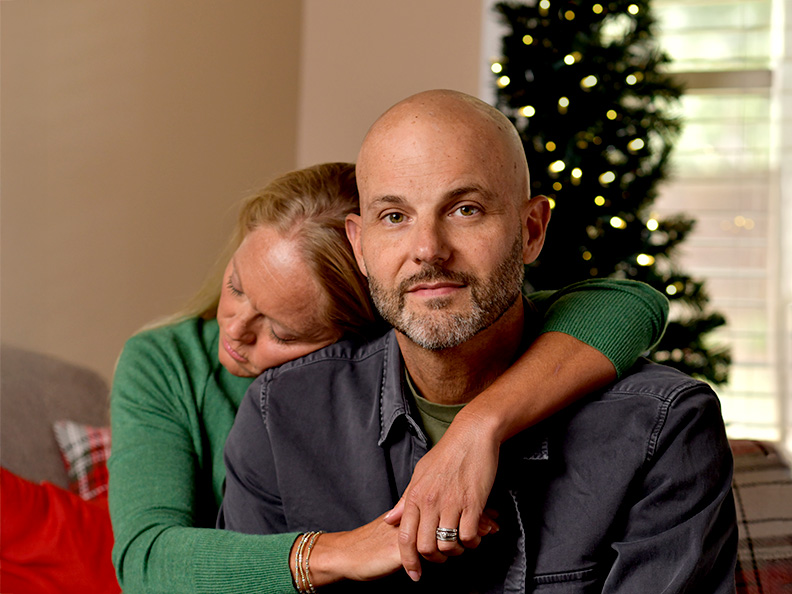Your gift is 100% tax deductible
Radiation Therapy for Acute Lymphocytic Leukemia (ALL)
Radiation therapy uses high-energy radiation to kill cancer cells. It isn’t usually part of the main treatment for ALL (acute lymphocytic leukemia, also known as acute lymphoblastic leukemia), but it might be used in certain situations.
- Note: This information is about treating acute lymphocytic leukemia (ALL) in adults. To learn about ALL in children, see Leukemia in Children.
When is radiation used to treat ALL?
- Radiation is sometimes used to treat leukemia that has spread to the brain and spinal fluid, or to the testicles.
- Radiation to the whole body is often an important part of treatment before a stem cell transplant.
- Radiation might be used to help reduce pain in an area of bone invaded by leukemia, if chemotherapy hasn’t helped.
- Rarely, it is used to help shrink a tumor pressing on the trachea (windpipe) and causing breathing problems. But chemotherapy is often used instead, as it may work more quickly.
How is radiation therapy given for ALL?
External beam radiation therapy is the type of radiation used most often for ALL. For this treatment, a machine delivers a beam of radiation to a specific part of your body.
Before your treatment starts, the radiation team will take careful measurements to determine the proper dose of radiation and the correct angles for aiming the beams. This planning session, called simulation, usually includes getting imaging tests such as CT or MRI scans.
Radiation treatment is a lot like getting an x-ray, but the radiation is much stronger. The radiation itself is painless. Each treatment lasts only a few minutes, although the setup time (getting you into place for treatment) usually takes longer.
The number of treatments you get depends on the reason for your radiation therapy.
Side effects of radiation treatment for ALL
The possible side effects of radiation therapy depend on where the radiation is aimed. They include:
- Fatigue (feeling tired)
- Skin changes in the treated area (ranging from mild redness to burning and peeling)
- Hair loss in the area being treated
- Nausea and vomiting (if your head or belly are treated)
- Diarrhea (if your belly or pelvis are treated)
- Mouth sores and trouble swallowing (if your head and neck area are treated)
- Headaches (if your head is treated)
- Lowered blood cell counts (can lead to fatigue, shortness of breath, bleeding or bruising, and an increased risk of infection)
More information about radiation therapy
To learn more about how radiation is used to treat cancer, see Radiation Therapy.
To learn about some of the side effects listed here and how to manage them, see Managing Cancer-related Side Effects.
- Written by
- References

Developed by the American Cancer Society medical and editorial content team with medical review and contribution by the American Society of Clinical Oncology (ASCO).
Appelbaum FR. Chapter 95: Acute Leukemias in Adults. In: Niederhuber JE, Armitage JO, Doroshow JH, Kastan MB, Tepper JE, eds. Abeloff’s Clinical Oncology. 6th ed. Philadelphia, Pa. Elsevier: 2020.
National Cancer Institute. Acute Lymphoblastic Leukemia Treatment (PDQ®)–Patient Version. 2025. Accessed at https://www.cancer.gov/types/leukemia/patient/adult-all-treatment-pdq on May 14, 2025.
National Comprehensive Cancer Network. NCCN Practice Guidelines in Oncology: Acute Lymphoblastic Leukemia. V.3.2024. Accessed at www.nccn.org/professionals/physician_gls/pdf/all.pdf on May 14, 2025.
Last Revised: August 13, 2025
American Cancer Society medical information is copyrighted material. For reprint requests, please see our Content Usage Policy.
American Cancer Society Emails
Sign up to stay up-to-date with news, valuable information, and ways to get involved with the American Cancer Society.



